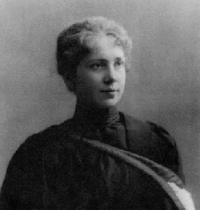A Big Contributor, Largely Overlooked
Back to Posts
By Almas
Does the name Harriet Brooks ring a bell?
Harriet Brooks was the first Canadian nuclear physicist born on January 1st, 1876 in Ontario. Brooks was called second to Marie Curie, the Polish physicist who was twice a recipient of the Nobel Prize.
As a female scientist, she worked alongside Ernest Rutherford and together worked on the science of Electricity and Magnetism. Did you know she was the first woman to acquire a Master’s degree from McGill University? Amazing. This major breakthrough paved the way for more women to hold this degree.
In her short career, Harriet Brooks worked not only with her mentor, Ernest Rutherford, but also with J.J. Thomson and Marie Curie; all Nobel laureates. Brooks’ research even led to Rutherford’s Nobel Prize.
Harriet Brooks led a team that laid the foundation for understanding radioactivity and the structure of the atom substance half-life (this is now taught in high school chemistry!). But being a female in the science field presented its challenges.
Even though today we recognize her as having been responsible for the phenomenal discovery of radioactive recoil, she was not given credit for this in her time. Brooks and her team worked to what led to the discovery of radon and its decay to polonium. This means she was one of the first to realize that one element can change to another! This, ladies and gentlemen, is huge in the world of radioactivity.
Being a woman in science in her time meant that she had to face a great amount of social stigma. This was magnified because she was in physics, a male-dominated course in Canada and most of the world at the time. What was even worse was the fact that she was told she had to leave her job at Barnard College, Columbia University’s women’s college because she became engaged.
The college told her that if she was to get married, she would need to stay at home – a social norm at the time. She broke the engagement, but also left the college because of the social situation there. When she was in her thirties, she was faced with the pressure of being single which is still prevalent today and left her work to get married to Frank Pitcher.
With a career only lasting seven years, Brooks left a mark on nuclear physics that is still echoed in the world today. She believed that “A woman has a right to the practice of her profession and cannot be condemned to abandon it merely because she marries” a legacy she left for the women of today.